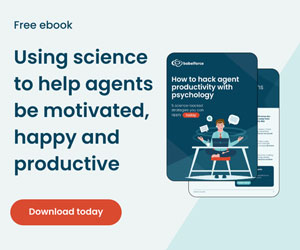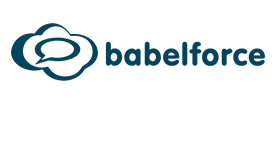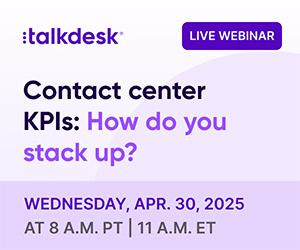Call centres everywhere are guilty of wasting huge amounts of their customers’ time. It’s short-sighted, damaging, and avoidable. Pierce Buckley at babelfoce explores 5 methods to stop wasting your customers’ time.
As the Steve Miller Band once said – “Time keeps on slippin’, slippin’, slippin’, into the future.”
Ok, it’s not the most profound observation ever. But it’s true. We’re all aware of our finite time slippin’ away, which makes it all the more painful when our time is wasted.
Apparently, time wasting is so aggravating that 41% of people would rather clean a toilet than contact customer service.
That’s according to a recent Shep Hyken report which aimed to show just how negative consumers feel about customer service.
Is it a fair assessment? Well, it depends on the customer service team. (It also depends on the toilet…)
But it is a fact that consumers have a negative view of call centre service. Getting in touch already feels like a waste of time, even before the bad service practices make it worse.
So what is driving all that hate for customer service?
What’s Turning Customers Into Haters?
You already know the answer – it’s waiting. It’s feeling like nobody values your time.
Poll after poll shows that the major friction point in most interactions is how long customers wait for a resolution.
Long wait times are generally the sum total of::
- Time on hold prior to routing
- Time on hold after reaching an agent
- Number of transfers between agents
So we understand the problem well enough! Customers *already* perceive contact with your CS team as wasted time.
Your job is to mitigate that sense of waste. And there are (at least!) 5 super-simple steps you can take to make that a reality.
1. Never Duplicate Effort
Picture the scene: Sharon’s job is to open every letter that her business receives and summarize the contents. Then she puts the letter back in a new envelope and sends it to Mike, who repeats the process.
This is a transparently wasteful scenario. So why does virtually every customer service department do something like this?
75% of customers find that they have to repeat themselves when dealing with brands. Look at your own recent experience and you’ll see that it rings true.
The two areas where this is most prevalent are when customers identify themselves, and when they outline their query.
Why is this repetition allowed to continue?
Because it’s a part of the customer experience that is virtually invisible to you.
This repetition should be your public enemy number one. If you do nothing else from this article, do this: remove duplicated effort.
- Connect tools like IVR and Helpdesk with automated transcription. Deliver pertinent information to agents as or before the customer is connected.
- For manual transfers, adapt your warm handover process to insist that one agent briefs the other.
- Commit to automated tools for things like customer identification. That means agents can’t be asking the same ID questions a minute later – so the automation has to be good enough to nail it the first time.
2. Get Creative With Hold Queues
Three quarters of customers will accept a guaranteed callback rather than waiting on hold.
Of course they would; have you ever tried to get stuff done while you’re on hold? It’s impossible.
This is the worst kind of time wasting. A long queue for, say, a Taylor Swift concert is one thing. But if you make me wait just to talk to someone – about a problem *you* may have caused – I’ll be saying Goodbye London and ditching you at the first opportunity.
I really thought that virtual queuing would be everywhere by now… it’s a no-brainer!
Instead, many UK industries have wait times exceeding 85 minutes. Worse, one fifth of those businesses attempt to cross-sell products to callers before they reach a navigation menu.
No. Stop it.
3. Introduce 24/7 Service
A simple step that any business can introduce – offer round-the-clock service.
That doesn’t mean employing agents throughout the night, or paying for an offshore service. It only means bringing in self-service tools that allow customers to request information and complete simple tasks.
And when we say “self-service”, these days we’re talking about conversational AI and virtual agent tools.
You know that these tools are everywhere these days.
But you may not know how ready customers are to use them. 62% of consumers already expect AI to be the *primary* route to customer service in the near future!
True, the night hours service will not be the equivalent level to your daytime service.
That’s fine; most customers will accept that.
But there are a few things they won’t accept:
- Being unable to make an overdue payment and incurring charges
- Being unable to access information about their own account
- Being unable to begin a claims process or enquiry
The common theme for these types of interaction is: they are easy to automate. Even when a human intervention is required at *some* point, there is still a major chunk that customers can perform on their own time.
4. Focus on CX Orchestration Tools
Here’s a word I don’t hear enough in customer service: orchestration.
The concept means different things to different areas of a business. In customer service, we’re talking about personalization in two areas:
- Events that take place within the interaction.
- Data that is stored about the customers such as lifetime value or churn risk.
Here’s a really common example: operations managers know where the headaches in their IVR setup are. Some elements of the IVR journey can be poorly thought out, no longer relevant, or unclear for the callers.
So what do you do about it?
Ideally, you fix those weaknesses immediately. Right?
In practice, a worryingly small number of call centres have this capability. It just doesn’t exist in the tech/tools mix that they use – but it should be the main, non-negotiable feature of any tool.
Organizations implementing customer journey orchestration achieve:
- Revenue gains of 10-20%
- Cost reductions of 15-25%
- Customer advocacy score improvements of 20-40 points.
5. Ensure that “Extra Homework” Tasks Are Meaningful
I am forever being asked to provide feedback. Everything from calling a contact centre to buying a bagel seems to trigger an email asking “how did we do?”
Here’s my question: apart from marketing the good responses, does anyone really use the info we’re providing?
Customers don’t think so. 71% of them do not believe that the feedback they provide makes any real difference.
It’s because most businesses only commit to half of the important steps in soliciting feedback.
For a refresher, those steps are
- Ask
- Categorize
- Act
- Follow up
Businesses are generally fine with the first two. They’re asking for feedback, and they’re doing some level of processing in the background.
What they are *not* doing is 1) making real changes, or 2) letting customers know about it.
Here’s the thing we all need to understand: feedback and reviews is free market research and brand ambassadorship. It is very much worth the small effort to put it into action and to let customers know about it.
For more information about babelforce - visit the babelforce Website
Call Centre Helper is not responsible for the content of these guest blog posts. The opinions expressed in this article are those of the author, and do not necessarily reflect those of Call Centre Helper.
Author: babelforce
Published On: 5th Sep 2024 - Last modified: 22nd Oct 2024
Read more about - Guest Blogs, babelforce, Pierce Buckley






 babelforce is the composable customer experience platform uniting agents and automation.
Our platform gives you the power to create the customer experiences you’ve always wanted, with tools anyone can use.
babelforce is the composable customer experience platform uniting agents and automation.
Our platform gives you the power to create the customer experiences you’ve always wanted, with tools anyone can use. 








